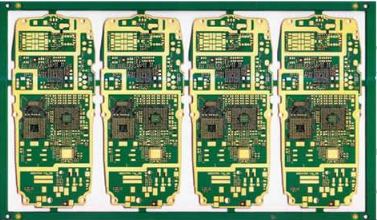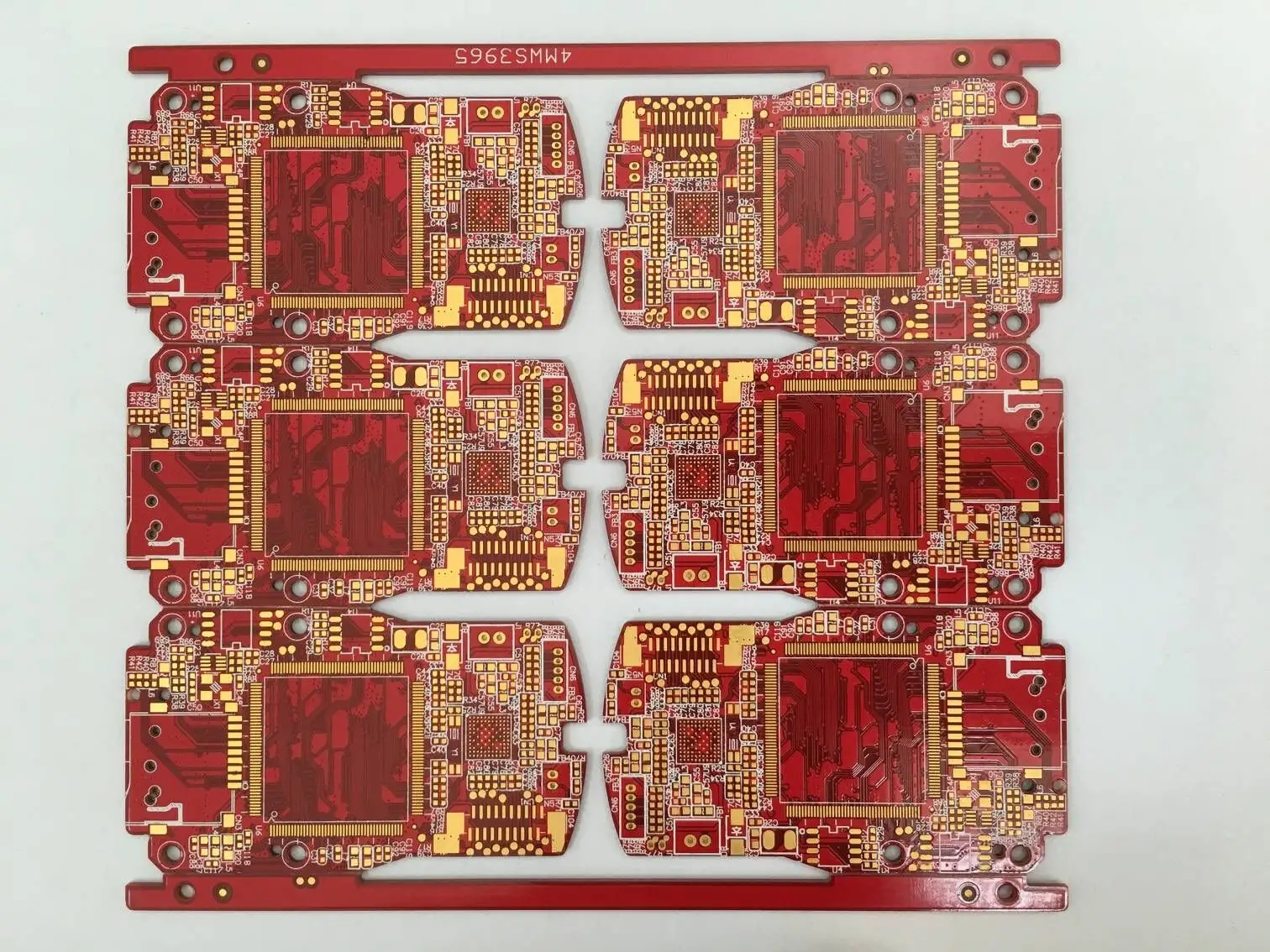

Key points of FPC flexible circuit board design in Circuit board factory
circuit board manufacturing, circuit board design, PCBA processing manufacturers explain to you: FPC Flexible circuit board design points of circuit board manufacturers explain
FPC Flexible printed circuit (FPC Flexible Printed Circuit) is a circuit form made on the flexible cut-off surface, whICh can be covered or not (usually used to protect FPC circuits). FPC FPC can be bent, folded or repeatedly moved in a variety of ways. Compared with ordinary hard boards (PCBs), FPC FPC has the advantages of light, thin, flexible, and so on, so its application is more and more extensive.
The base film of FPC is generally made of polyimide (PI for short) and polyester (PET for short). The material thickness is 12.5/25/50/75/125 um, and 12.5 and 25 um are commonly used. If FPC needs to be welded at high temperature, its material is usually PI, while the base material of PCB is usually FR4.
The cover layer of FPC FPC flexible circuit board is a composite of medium film and adhesive, or a coating of flexible medium, which can prevent contamination, moisture, scratches and other protective effects. The main materials are the same as the base materials, namely polyimide and polyester. The thickness of common materials is 12.5um.
During the design of FPC, each layer needs to be bonded, and FPC adhesive is required. Common adhesives for flexible boards include Acrylic, Modified Epoxy, Phenolic Butyrals, reinforcing adhesive, pressure sensitive adhesive, etc., while single-layer FPC flexible circuit boards do not need adhesive for bonding.
In many applications such as component welding, the flexible plate needs to be externally supported by a stiffener. The main materials are PI or Polyester film, glass fiber, polymer material, steel sheet, aluminum sheet, etc. PI or Polyester film is a commonly used material for reinforcing flexible plates, with a thickness of 125 um. The hardness of glass fiber (FR4) reinforcement plate is higher than that of PI or Polyester, and it is difficult to process when it is used in places with higher requirements.

Compared with PCB pad processing methods, FPC pad processing also has a variety of methods, including the following:
1) ChEMIcal nickel gold is also calLED chemical gold leaching or gold precipitation. Generally, the thickness of the non electrolytic nickel layer used on the copper metal surface of PCB is 2.5um - 5.0um, and the thickness of the gold DIPping (99.9% pure gold) layer is 0.05um - 0.1um (previously, it was reported that a PCB factory worker used the replacement method to replace the gold in the pcb pool). The technology has the advantages of smooth surface, long storage time and easy welding; Suitable for fine pitch components and thin PCBs. For FPC, it is suitable because of its thin thickness. Disadvantages: Not environmentally friendly.
2) Advantages of tin lead plating: it can directly add flat tin lead to the bonding pad, with good solderability and uniformity. For some processing processes such as HOTBAR, this method must be used on FPC. Disadvantages: lead is easy to be oxidized, and the storage time is short; It is required to pull the galvanized wire; Not environmentally friendly.
3) Selective Electrogold Plating (SEG) Selective gold plating refers to the use of electrogold plating for local areas of PCB, and another surface treatment method for other areas. Electrogilding refers to coating nickel layer on PCB copper surface first and then electroplating gold layer. The thickness of nickel layer is 2.5um - 5.0um, and the thickness of gold layer is generally 0.05um - 0.1um. Advantages: thick gold coating, strong oxidation resistance and wear resistance. "Golden Finger" is generally treated in this way. Disadvantages: environmental protection, cyanide pollution.
4) Organic solderability protective layer (OSP) This process refers to covering the exposed PCB copper surface with specific organic substances. Advantages: It can provide a very flat PCB surface, meeting environmental requirements. PCB suitable for fine pitch components.
Disadvantages: PCBA requiring conventional wave soldering and selective wave soldering is not allowed to use OSP surface treatment process.
5) Hot air leveling (HASL) This process refers to covering 63/37 lead tin alloy on the final bare metal surface of PCB. The thickness of hot air leveling lead tin alloy coating shall be 1 um to 25 um. The hot air leveling process is difficult to control the thickness of the coating and the pattern of the pad, so it is not recommended to use it on PCBs with fine pitch components, because the fine pitch components have high requirements on the flatness of the pad; Hot air leveling process has a great impact on FPC with very thin thickness, so it is not recommended to use this surface treatment method.
In the design, FPC often needs to be used together with PCB. In the connection between FPC and PCB, board to board connector, connector plus gold finger, HOTBAR, soft and hard bonding board, and manual welding are usually used. For different application environments, designers can adopt corresponding connection methods.
In practical applications, it is necessary to determine whether ESD shielding is required according to the application needs. When FPC flexibility requirements are not high, it can be realized with solid copper sheet and thick medium. Copper skin grid and conductive silver paste can be used for high flexibility requirements.
Due to the flexibility of FPC FPC, it is easy to break under stress, so some special means are required for FPC protection,
Common methods are:
1. The minimum radius of the inner corner on the flexible profile is 1.6 mm. The larger the radius, the higher the reliability, and the stronger the tear resistance. A routing line close to the plate edge can be added at the corner of the profile to prevent the FPC from being torn.
2. The cracks or grooves on the FPC must terminate in a circular hole with a diameter of not less than 1.5mm, which is also required when the FPC of two adjacent parts needs to be moved separately.
3. In order to achieve better flexibility, the bending area needs to be selected in the area with uniform width to avoid the FPC width change and uneven routing density in the bending area.
4. Stiffener, also known as stiffening plate, is mainly used to obtain external support. The materials used include PI, Polyester, glass fiber, polymer materials, aluminum sheets, steel sheets, etc. Reasonable design of the location, area and material of the reinforcing plate has a great effect on avoiding FPC tearing.
5. In multi-layer FPC design, air gap layering design shall be carried out for areas that need frequent bending during product use. Thin PI materials shall be used as far as possible to increase the flexibility of FPC to prevent FPC from breaking during repeated bending.
6. If space permits, a double-sided adhesive tape fixing area shall be designed at the connection between the golden finger and the connector to prevent the golden finger and the connector from falling off during bending.
7. FPC positioning wire shall be designed at the connection between FPC and connector to prevent FPC from deflection, improper insertion and other defects during assembly. It is conducive to production inspection.
Due to the particularity of FPC, the following points should be noted when routing:
Routing rules: give priority to ensuring smooth signal routing, follow the principle of short, straight and less through holes, and try to avoid long, thin and winding lines, mainly horizontal lines, vertical lines and 45 degree lines, avoid arbitrary angle lines, and avoid arc lines for bent parts. The above details are as follows:
1. Line width: considering the inconsistent line width requirements of data line and power line, the reserved wiring space is 0.15mm on average
2. Line pitch: According to the production capacity of most manufacturers, the design line pitch (Pitch) is 0.10mm
3. Line margin: the distance between the outermost line and the FPC contour is designed as 0.30mm, and the larger the space is, the better
4. Fillet: the minimum value of fillet on FPC contour is designed as radius R=1.5mm
5. The conductor is perpendicular to the bending direction
6. The conductor shall pass through the bending area evenly
7. The conductor shall cover the bending area as much as possible
8. No additional plated metal is allowed in the bending area (the conductor in the bending area is not plated)
9. Keep the line width consistent
10. The wiring of double sided boards shall not overlap to form "I" shape
11. Minimize the number of layers in the bending area
12. The bending area shall be free of vias and metallized holes
13. The bending central axis shall be set at the center of the conductor. The material coefficient and thickness on both sides of the conductor shall be consistent as far as possible. This is very important in the application of dynamic bending.
14. The horizontal plane torsion follows the following principles - reduce the bending section to increase flexibility, or partially increase the copper foil area to increase toughness.
15. For bending of vertical plane, increase the bending radius and reduce the number of layers in the bending center area
16. For products with EMI requirements, if high-frequency radiation signal lines such as USB and MIPI are on the FPC, conductive silver foil layer shall be added on the FPC according to the EMI measurement and conductive silver foil shall be grounded to prevent EMI.
With the expansion of FPC application environment, the above contents will continue to be enriched or inapplicable. However, as long as we design carefully, think more and summarize more, we believe that it is not difficult to design FPC, and we can easily get started. PCB manufacturers, PCB designers and PCBA manufacturers will explain to you the key points of FPC flexible PCB design of PCB manufacturers.
然后
聯(lián)系
電話熱線
13410863085Q Q

微信

- 郵箱










